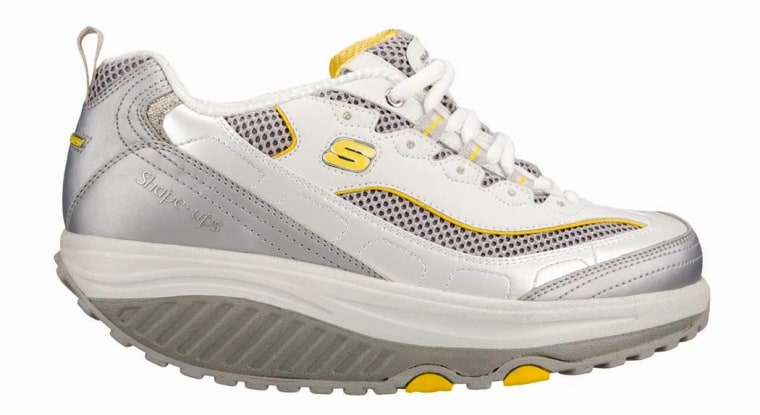Eric Sprunk, vice-president for global product and merchandising at Nike, ended a speech to investors on innovation with a jab at the so-called toning shoes driving sales increases for competitors. "Wouldn't it be great if we could make a pair of shoes that made your butt smaller, made my gut look smaller, make your muscles look a little bit bigger, just by putting them on and ... walking in them?" Sprunk asked his audience on May 5. "Nobody can do that. I was just teasing."
The big market share gains that adidas's Reebok unit and Skechers USA are getting thanks to their toning shoe lines are no joke, however. Although Nike has held on to its top spot in the U.S. woman's athletic footwear market, its share slipped 7.2 percentage points, to 31 percent, or $412 million, in the first quarter from a year ago, according to researcher SportsOneSource. Reebok's share more than doubled, to 6.7 percent, or $90.3 million, and Skechers tripled to 17 percent, or $225.7 million. "Nike spent months watching this thing develop and did nothing about it and now they are paying the price of a missed opportunity," said Matt Powell, a sports retail analyst at SportsOneSource.
Toning shoes are designed to simulate the feeling of walking on sand and make wearers stabilize their steps, leading to stronger leg, buttock, back, and abdominal muscles, according to Skechers, maker of the Shape-ups toning shoe. Reebok says its EasyTones generate 28 percent more gluteus maximus muscle activation than a typical walking shoe, and 11 percent more in the hamstring and calves. Both companies cite research and testing they commissioned to back up the claims.
John Pagliano, a podiatrist in Long Beach, Calif., says he gets asked about toning shoes several times a day and he doesn't recommend them. While he said the instability in the shoes causes muscles to work harder, he hasn't seen enough evidence to believe it can firm wearers' backsides. "I say I'm not really sure, and I haven't been convinced by the studies," said Pagliano, who specializes in athletic injuries.
Still, women's toners with their $100-plus prices have become some of the most lucrative footwear in the U.S. A year ago, the top 10 highest-grossing athletic shoes didn't include any toning shoes or women's footwear. In a May 16 survey by SportsOneSource, six of the top 10 athletic shoes were toning products: four Shape-ups and two EasyTones. Nike had the four remaining shoes, including a pair of Air Jordans that sell for $150.
Toning-shoe sales in the U.S. totaled just $17 million in 2008 but jumped eightfold, to $145 million, last year when both Reebok and Skechers introduced their models, according to NPD Group. Skechers featured its Shape-ups line in a Super Bowl commercial in February, further fueling sales of toning shoes. In the first four months of this year, toning footwear sales skyrocketed to $252 million — 75 percent more than the total for all of 2009.
"The explosion of growth in this space in such a short period of time eclipses everything I have witnessed in the industry over the last 25 years," says adidas CEO Herbert Hainer, who said Reebok could sell 5 million pair of toning shoes in the U.S. this year.
After Reebok ramped up its ads last fall, retailer Foot Locker couldn't keep up with toning-shoe demand. Says Foot Locker CEO Ken Hicks: "The American consumer is always looking for an easy way to lose weight, and this proves it."
Nike wants to lure women thinking of buying toning shoes to its five-year-old Free brand, which sells for $85 and the company says simulates barefoot running to strengthen feet and muscles. It plans new versions this fall. "We're excited that women are spending money on athletic footwear, and we think we can get our share," said Charlie Denson, president of the Nike brand. Free can "supply the same kind of benefit to the athlete that maybe some of the others are claiming."
In the quarter ended Feb. 28, footwear was the only segment of Nike's North American business to post a sales decline, dropping 1 percent, to $1.2 billion, while overall revenue rallied 6.6 percent, to $4.73 billion.
"They realize it's definitely a category, and they can't ignore it," said Chris Svezia, a sporting-goods analyst at Susquehanna Financial Group. "There's probably pressure from retailers saying 'why not do it?' "
